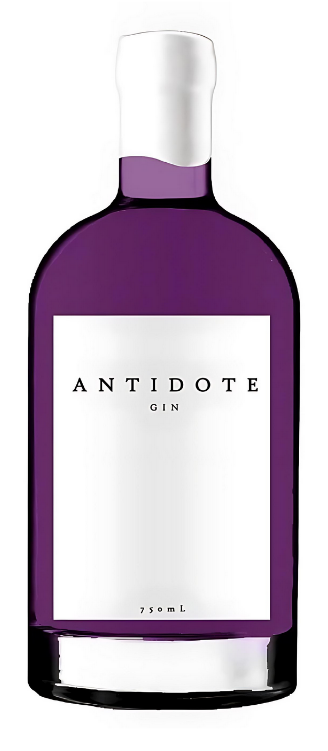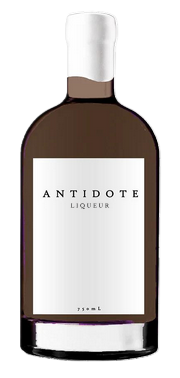This guide outlines the traditional and widely accepted methods for crafting a vibrant citrus liqueur like Orangecello, focusing on the fundamental principles that yield a high-quality product. While specific nuances may differ from your established McLaren Vale process, these steps provide a robust framework.
Citrus Liqueur Creation: The Fundamental Process
The creation of Orangecello, like its more famous cousin Limoncello, revolves around the meticulous extraction of essential oils from citrus zest, followed by the careful blending with a spirit and a sugar syrup. The quality of each ingredient and the precision of each step are paramount.
1. Sourcing and Preparing the Oranges: The Heart of the Flavour
The choice of oranges is perhaps the most critical decision. For a premium Orangecello, seek out unwaxed, organic oranges where possible. Any wax or chemical residue on the peel will compromise the purity and flavour of your liqueur. The variety of orange will also significantly impact the final flavour profile:
-
Navel Oranges: Offer a good balance of sweetness and acidity, yielding a classic, bright orange flavour.
-
Valencia Oranges: Tend to be juicier with a slightly tarter zest, which can add a refreshing zing.
-
Blood Oranges: Will impart a beautiful reddish hue and a unique, berry-like, bittersweet complexity to the liqueur.
-
Seville Oranges: While very tart, their highly aromatic zest could be used for a more bitter, marmalade-like Orangecello, perhaps as a blend component.
Preparation is meticulous:
Only the outermost, intensely coloured layer of the orange peel, known as the zest, is used. The white pith directly beneath the zest contains bitter compounds that must be avoided.
-
Thoroughly wash and scrub the oranges under cold running water to remove any dirt or surface impurities. Pat them completely dry.
-
Using a vegetable peeler, microplane, or zester, carefully remove only the coloured zest. Aim for long, thin strips if using a peeler, ensuring no white pith is attached. If using a microplane, lightly grate only the surface. Precision here is key to avoiding bitterness.
2. Maceration: Extracting the Essence
This is the process where the aromatic oils from the orange zest are infused into a high-proof spirit.
-
Spirit Choice: The base spirit should be a high-quality, neutral grain spirit with a high alcohol content, typically 95-96% ABV (Alcohol by Volume). This high proof is crucial for efficiently extracting the essential oils and flavours from the zest. Common choices include rectified spirit or very high-proof unaged grape spirit. In Australia, a high-proof neutral cane spirit is often accessible.
-
Container: Use a large, airtight glass jar or container. Glass is preferred as it's non-reactive and won't impart unwanted flavours.
-
Process: Place the prepared orange zest into the clean glass container. Pour the high-proof spirit over the zest, ensuring it is fully submerged. Seal the container tightly.
-
Infusion Time and Environment: Store the jar in a cool, dark place, away from direct sunlight. The maceration period typically ranges from 2 weeks to 4 weeks, or even longer, depending on the desired intensity of flavour. Gently agitate the jar every few days to ensure even extraction. Over time, you will observe the spirit taking on the vibrant colour of the orange zest, and its aroma will become intensely citrusy.
3. Preparing the Simple Syrup: The Sweet Balance
The simple syrup is essential for balancing the intensity of the alcohol and extracted citrus oils, transforming the concentrate into a palatable liqueur.
-
Ingredients: Use high-quality filtered water and granulated sugar. The ratio of sugar to water will dictate the final sweetness and viscosity of the liqueur. A common starting point is a 1:1 ratio (by volume) of sugar to water, but this can be adjusted. For a richer, more viscous liqueur, a 1:0.75 (sugar to water) or even 2:1 ratio can be used.
-
Process: In a clean saucepan, combine the sugar and water. Heat gently over medium heat, stirring constantly, until the sugar is completely dissolved. Do not boil vigorously; the aim is to dissolve the sugar, not reduce the volume significantly. Once clear, remove from heat and allow the syrup to cool completely to room temperature. It is critical that the syrup is cool before mixing with the infused spirit to prevent cloudiness.
4. Combining and Diluting: The Final Blend
Once the maceration is complete and the simple syrup is fully cooled, it's time to create the liqueur.
-
Filtering the Infusion: Carefully strain the infused spirit to remove all the orange zest. Use a fine-mesh sieve lined with cheesecloth or a coffee filter for the clearest result. This ensures no solid particles remain in the final product.
-
Blending: Slowly add the cooled simple syrup to the strained orange-infused spirit. Stir gently to combine thoroughly.
-
Cloudiness (Louche Effect): It's common for the mixture to become slightly cloudy or opaque upon the addition of the water-based syrup. This is known as the "louche effect" (or "ouzo effect") and is due to the essential oils, which are soluble in high-proof alcohol, becoming insoluble in the diluted solution. This is a natural and desirable characteristic of quality citrus liqueurs.
-
Adjusting Sweetness and Strength: At this stage, you can taste the liqueur and adjust for sweetness or alcohol strength. If it's too strong or sweet, you can add more cooled water or simple syrup, respectively. However, significant additions of water will increase cloudiness.
-
Final Filtration (Optional but Recommended): For a truly polished product, a second, very fine filtration through multiple layers of cheesecloth or specialised liqueur filters can be performed.
5. Ageing (Resting): Allowing Flavours to Marry
While Orangecello can be enjoyed immediately, a resting period significantly improves the flavour.
-
Storage: Transfer the finished liqueur into clean, sterilised glass bottles with airtight seals.
-
Resting Period: Store the bottled liqueur in a cool, dark place for at least 2-4 weeks, or even longer (up to several months). During this time, the flavours will harmonise, mellow, and deepen, resulting in a more integrated and complex taste profile.
Flavour Profile
A well-made Orangecello should boast a vibrant and complex flavour profile:
-
Aroma: Intense, fresh orange zest, bright and aromatic, often with hints of floral notes.
-
Taste: A harmonious balance of sweet and tart, with a pronounced, natural orange flavour that is neither artificial nor overly sugary. The bitterness of the underlying orange (if any) should be subtle and contribute to complexity, not overwhelm.
-
Mouthfeel: Smooth, viscous, and warming from the alcohol, ideally without a harsh alcoholic burn. The traditional cloudiness adds to a rich mouthfeel.
-
Finish: Clean, lingering orange zest notes with a pleasant sweetness that fades gently.
Key Features of Quality Orangecello Production
-
Organic, Unwaxed Oranges: Absolutely critical for pure flavour extraction and avoiding unwanted chemicals.
-
High-Proof Neutral Spirit (95-96% ABV): Essential for efficient and thorough extraction of essential oils from the zest.
-
Strict Avoidance of Pith: The white pith contains bitter compounds that will ruin the flavour; meticulous zesting is paramount.
-
Adequate Maceration Time: Allowing sufficient time (2-4+ weeks) for the essential oils to fully infuse the spirit.
-
Properly Cooled Simple Syrup: Ensuring the syrup is fully cooled before blending prevents cloudiness due to thermal shock and aids in flavour integration.
-
Resting Period: A crucial step for the flavours to marry and mellow, resulting in a more refined and integrated liqueur.
Suggested Cocktails and Serves
Orangecello is incredibly versatile and can be enjoyed in numerous ways:
-
Chilled Neat: The most classic way to enjoy Orangecello. Serve ice-cold, straight from the freezer, in a small cordial glass as an after-dinner digestif.
-
Over Ice: A refreshing option, particularly on a warm McLaren Vale day.
-
Orangecello Spritz: Combine Orangecello with Prosecco or sparkling wine and a splash of soda water. Garnish with an orange slice.
-
Orange Martini: A twist on the classic. Mix Orangecello with gin or vodka and a dash of orange bitters.
-
Dessert Topping: Drizzle over vanilla ice cream, panna cotta, or fruit salads for an exquisite citrus kick.
-
Baking Ingredient: Incorporate into cakes, glazes, or syrups for a delightful orange flavour.
-
Orangecello Margarita: Blend Orangecello with tequila, lime juice, and a touch of agave nectar for a citrusy, complex margarita.
FAQ's
Q: Why do I need to use such a high-proof spirit? Can't I use vodka?
A: A high-proof (95-96% ABV) neutral spirit is crucial because it acts as a much more efficient solvent for the essential oils in the orange zest. Lower proof spirits, like standard 40% ABV vodka, will not extract as much flavour or colour, resulting in a weaker and less aromatic liqueur. The high-proof spirit also helps prevent microbial growth during maceration.
Q: My Orangecello turned cloudy when I added the syrup. Is this normal?
A: Yes, this is completely normal and expected. It's called the "louche effect" or "ouzo effect." The essential oils extracted from the orange zest are soluble in high-proof alcohol but become insoluble and form tiny micelles when water is introduced, causing the cloudiness. It's a sign of a well-made, flavour-rich citrus liqueur.
Q: How long should I macerate the orange zest?
A: A minimum of 2 weeks is generally recommended, but 3 to 4 weeks often yields a more intense flavour and deeper colour. You can even go longer (up to 6 weeks or more), tasting periodically until you achieve the desired strength of flavour. Too long, however, can sometimes extract unwanted bitterness if any pith was included.
Q: What's the best way to store Orangecello? Does it need to be refrigerated?
A: Once bottled, Orangecello should be stored in a cool, dark place. While not strictly necessary to refrigerate due to its high alcohol content, serving it chilled is traditional and enhances the flavour. Many prefer to store it in the freezer, as the alcohol content prevents it from freezing solid, resulting in a delightfully viscous, icy-cold serve.
Q: My Orangecello tastes too bitter. What went wrong?
A: Bitterness in Orangecello is almost always due to the inclusion of too much white pith from the orange peel. The pith contains bitter compounds that infuse into the spirit. To avoid this, ensure you are meticulously zesting only the very outermost orange layer and leaving all the white pith behind. If your current batch is too bitter, you can try to mellow it by making a new, less bitter batch of orange-infused spirit and blending it, or by simply adding more plain simple syrup to dilute the bitterness, though this will also reduce the alcohol content.




Comments (0)
There are no comments for this article. Be the first one to leave a message!